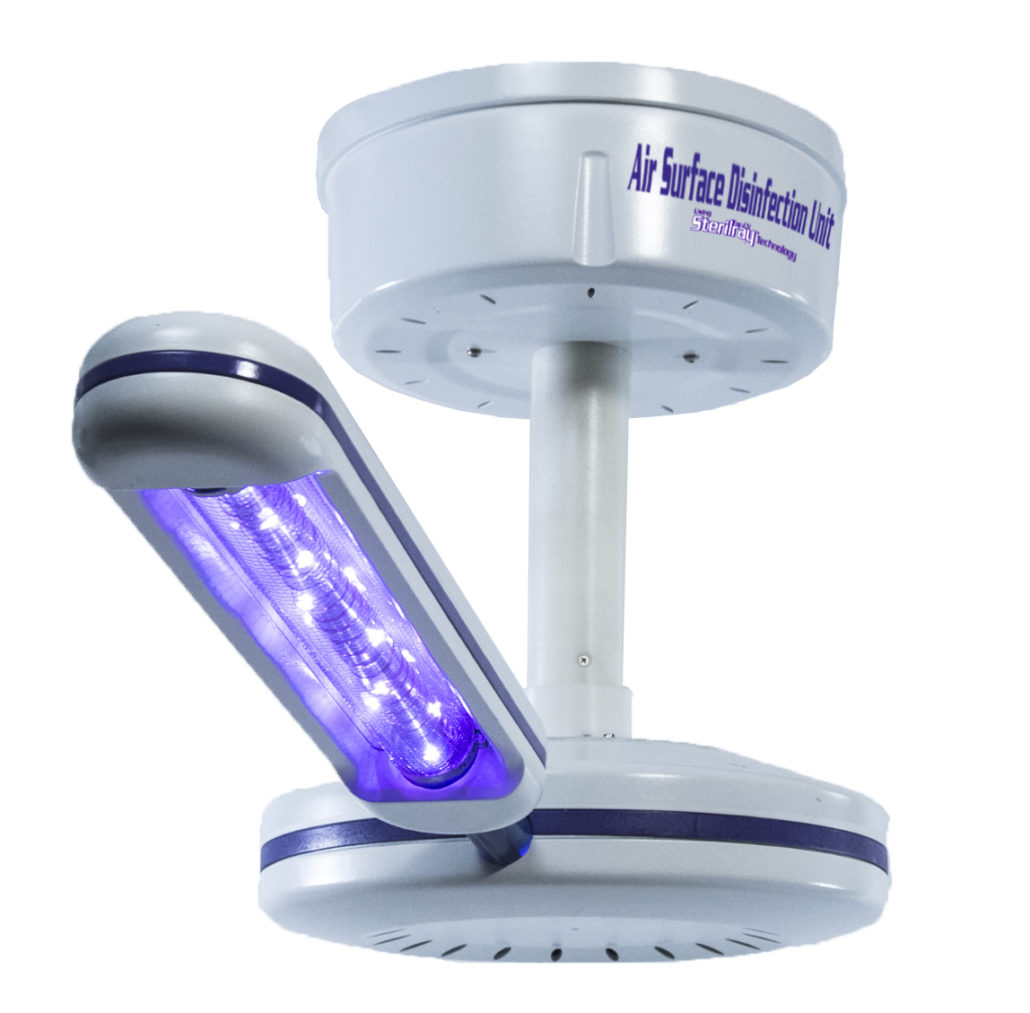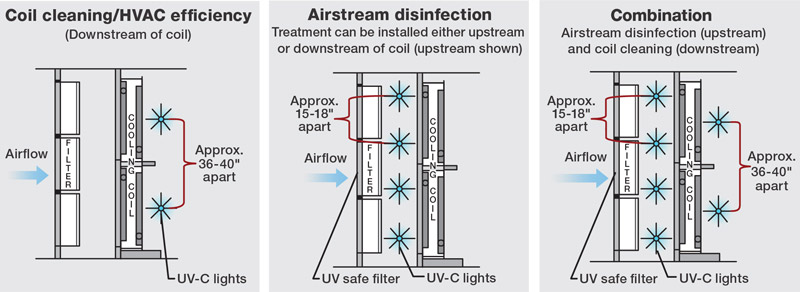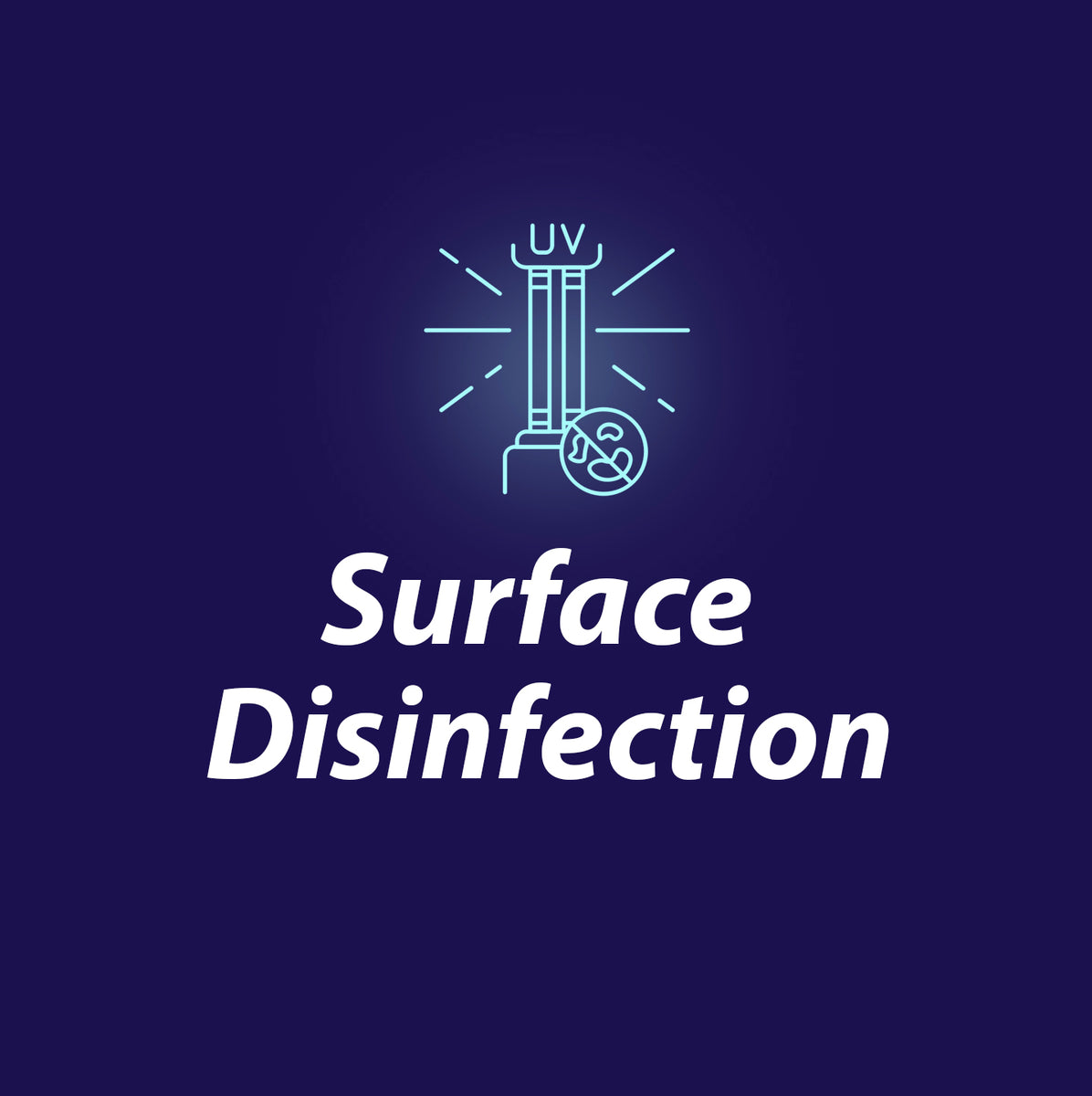Discover the Conveniences of UV Surface Disinfection: Reliable and Eco-Friendly Sanitation
Wiki Article
Using the Potential of UV Disinfection: Safeguarding Health and Hygiene
UV disinfection, a modern technology widely made use of in different industries, has verified effective in getting rid of unsafe pathogens. From comprehending the devices at play to applying this technology in our day-to-day lives, this conversation aims to shed light on the potential of UV sanitation and its role in securing our wellness and hygiene.Comprehending UV Sanitation
UV sanitation is an extremely effective and commonly made use of method for ensuring and eliminating unsafe microorganisms health and wellness and hygiene. This method makes use of ultraviolet (UV) light to inactivate microbes by damaging their DNA and stopping them from recreating. UV sanitation is especially efficient versus germs, infections, and various other bacteria that can create conditions and infections.The concept behind UV disinfection is straightforward yet effective. When UV light is discharged at a specific wavelength, it permeates the microbe's cell wall and interrupts its hereditary product. This procedure, referred to as photodissociation, leads to the development of thymine dimers, which prevent the bacterium from reproducing and providing it harmless. UV disinfection can be applied in different setups, consisting of water treatment plants, healthcare centers, food handling sectors, and air filtration systems.
One of the advantages of UV sanitation is its ability to properly and successfully get rid of a vast array of virus without the demand for ingredients or chemicals. Unlike other disinfection approaches, such as chlorine or ozone, UV sanitation does not introduce unsafe byproducts or chemical residues right into the setting. Furthermore, UV disinfection is a non-contact procedure, which indicates that it does not call for physical call with the microbes, decreasing the threat of cross-contamination.

The Scientific Research Behind UV Sanitation
The effectiveness of UV sanitation exists in its ability to interfere with the hereditary product of bacteria, making them incapable to duplicate and thereby removing their damaging capacity. This high-energy UV-C radiation is most efficient in disinfection applications due to the fact that it can permeate the cell walls of microorganisms and damage their DNA or RNA.When microorganisms are revealed to UV-C radiation, the energy is taken in by their genetic product, triggering bonds to break and developing chemical responses that disrupt their capability to reproduce. This stops the microorganisms from duplicating and spreading infection. UV sanitation is especially reliable against viruses, fungis, and microorganisms, consisting of common microorganisms such as Escherichia coli, Salmonella, and Flu.
The scientific research behind UV sanitation is supported by considerable research and research studies. It has been shown that direct exposure to a sufficient dosage of UV-C radiation can achieve a high degree of disinfection, frequently exceeding 99.9% effectiveness in killing bacteria. It is vital to note that the effectiveness of UV sanitation depends on numerous variables, consisting of the strength of UV-C radiation, direct exposure time, range from the UV resource, and the vulnerability of the microorganism to UV radiation (uv surface disinfection).
Applications of UV Disinfection
Provided the considerable research study and efficiency of UV sanitation in interfering with the genetic material of bacteria, it is essential to check out the various functional applications of this modern technology. UV disinfection has actually verified to be a beneficial device in a large range of industries where keeping a tidy and secure atmosphere is necessary.One major application of UV sanitation remains in health care settings. UV light can be used to decontaminate surfaces, devices, and also the air in health centers and medical centers. This aids to decrease the risk of healthcare-associated infections and makes sure a more secure environment for individuals and healthcare employees.
Another essential application remains in the food and beverage sector. UV disinfection is used to treat water and get rid of unsafe pathogens, such as E. coli and Salmonella, from the production process. uv surface disinfection. This ensures the safety and quality of the products we consume
UV sanitation is likewise commonly utilized in water treatment plants and wastewater treatment facilities. It is an effective method for destroying damaging microorganisms, infections, and bloodsuckers that can be existing in water resources. This assists to supply safe and clean drinking water to areas and shield the atmosphere from contamination.
Furthermore, UV disinfection is employed in the pharmaceutical sector to decontaminate devices and preserve the integrity of items. It is likewise used in laboratories and research centers to avoid contamination and make certain exact results.
Advantages of UV Sanitation Innovation
One noteworthy benefit of using UV sanitation innovation is its ability to properly get rid of bacteria without using harsh chemicals. This is particularly useful in different settings, such as medical care facilities, water treatment plants, and food handling markets, where the presence of unsafe pathogens poses a substantial danger to public health and security.
Unlike conventional sanitation techniques that count on chemicals like chlorine Continue or ozone, UV sanitation technology uses ultraviolet light to target and damage the DNA of bacteria, effectively neutralizing their ability to duplicate and cause infections. This procedure not only removes the need for possibly damaging chemicals but likewise lowers the danger of chemical deposit or byproducts staying in the treated atmosphere.

In addition, UV disinfection technology is ecologically friendly. As it does not depend on making use of chemicals, it removes the demand for their disposal, production, and transportation, minimizing the total carbon impact connected with sanitation procedures. In addition, UV sanitation systems have a longer life expectancy contrasted to chemical-based techniques, leading to less regular replacement and further decreasing waste.
Applying UV Sanitation in Day-to-day Live
To effectively apply UV sanitation in life, organizations and people can incorporate portable UV sanitizing gadgets into their hygiene routines and cleansing techniques. These gadgets are designed to give off ultraviolet light, which has been confirmed to eliminate or suspend a vast array of microbes, consisting of fungis, germs, and viruses. By utilizing portable UV disinfecting gadgets, individuals can decontaminate commonly touched surface areas and items, such as cell phones, laptop computers, secrets, and doorknobs, minimizing the danger of spreading out bacteria and infections.Along with incorporating portable UV sterilizing gadgets, it is essential to adhere to proper standards and referrals for efficient UV sanitation. This includes making certain that the device is made use of appropriately and for you could try this out the suggested period to attain optimal sanitation outcomes. It is also critical to prioritize precaution, such as wearing safety eyeglasses and preventing straight exposure of the UV light to the skin.

In addition, companies can execute UV disinfection modern technology in numerous setups to boost health methods. For instance, health centers and healthcare centers can utilize UV sanitation robots to sanitize client rooms, running movie theaters, and various other high-touch areas. Food processing sectors can integrate UV sanitation systems right into their production lines to boost food security and prevent contamination.
Verdict
In verdict, UV disinfection innovation holds excellent potential in safeguarding health and wellness and hygiene. With its countless advantages, UV disinfection is an important tool for preserving a tidy and healthy and balanced environment.Unlike other disinfection techniques, such as chlorine or ozone, UV sanitation does not introduce dangerous by-products or chemical residues into the environment. It is essential to keep in mind that the performance of UV disinfection depends on various factors, including the intensity of UV-C radiation, exposure time, distance from the UV source, and the susceptibility of the microorganism to UV radiation.
One more advantage of UV disinfection technology is its ability to offer continuous and rapid sanitation. Unlike guidebook Full Report cleansing approaches, which can be time-consuming and require significant labor, UV disinfection systems can be automated and run constantly, making sure constant disinfection without human intervention.To effectively implement UV sanitation in day-to-day life, organizations and people can include portable UV sanitizing tools right into their hygiene regimens and cleansing methods.
Report this wiki page